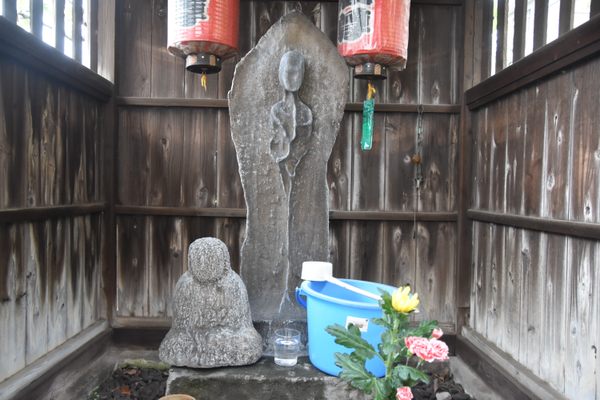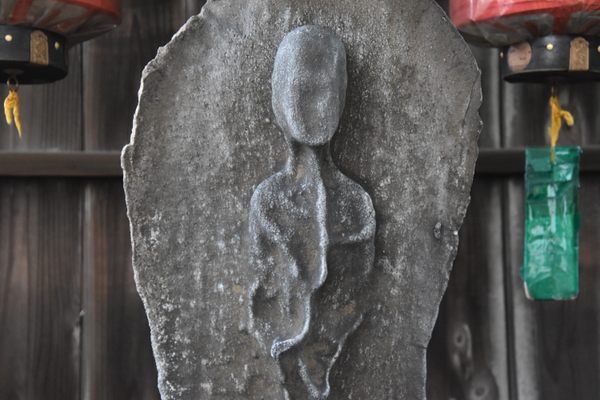About
Jizō, or Ksitigarbha in Sanskrit, is one of the most worshipped deities in Japanese culture. The deity can be found in almost every neighborhood, enshrined in the corner of a temple or on the street as a "stone Buddha" effigy wearing a red bib. Believed to be a guardian of children and deliverer of damned souls, they have been popular since the feudal years.
As there exist many local varities of Jizō across Japan, some happen to be quite unusual or even bizarre; but in whatever form, the deity remains well-worshipped by the locals. A good example is the "Ghost Buddha" of Kōfuku-ji Temple in the Ōi neighborhood of Shinagawa Ward, Tokyo.
The statue stands on the edge of the temple cemetery, housed in a small shrine. There is no historical marker or such, only the lanterns and banners advertising a "child-guarding Jizō." Flower offerings and a bucket of water at its feet suggest a lasting worship, but the effigy itself is damaged beyond recognition, its shape skeletal and spectral. Some have described it as resembling an Egyptian mummy or a fossilized extraterrestrial, but the nickname "ghost" appears to fit it best.
But when was it made, how did it get so disfigured, and where is it from? No one seems to know the answer to these questions, not even the priests at Kōfuku-ji or the local historians. One legend claims that the statue was found wrecked at the beach of Shinagawa, and another tells a ghost-feeding-her-child story similar to the one known in Kyoto.
Historically, Kōfuku-ji was founded in 1879 as a merger of two local temples, but the Jizō effigy may date back even further. The head priest of the temple believes that its appearance is a result of worshippers' care, years of watering wearing down the stone statue bit by bit until it was hardly more than skin and bone.
Related Tags
Hidden Japan: Sado Island, Nara & Kyoto
Explore a different side of Japan.
Book NowCommunity Contributors
Added By
Published
December 22, 2023




























